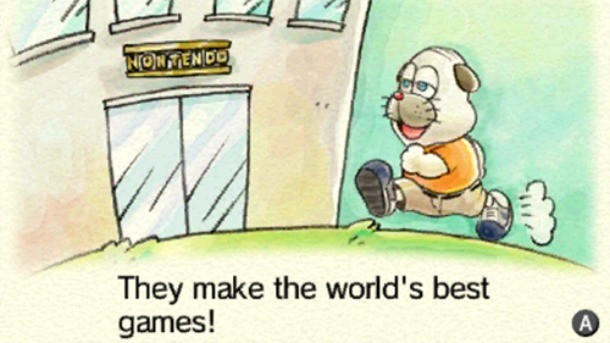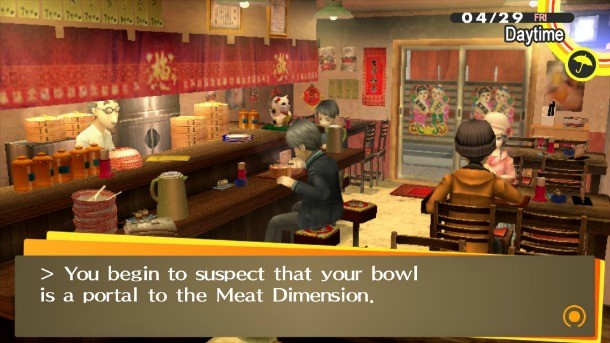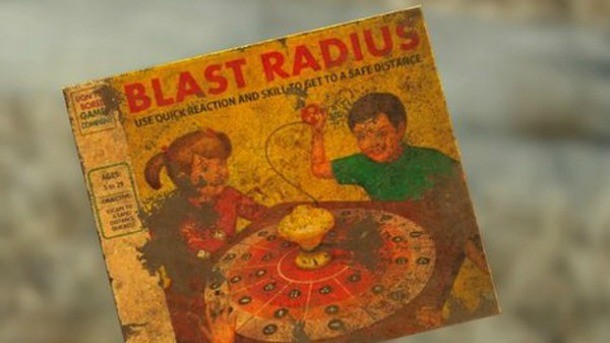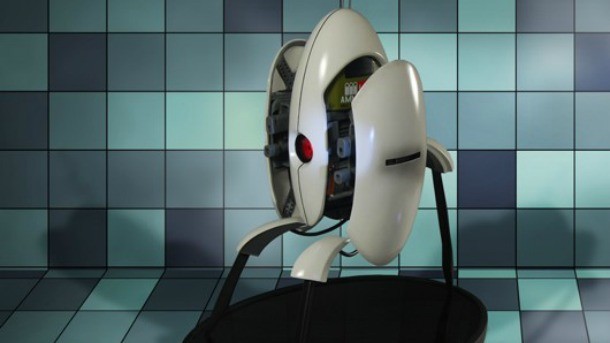Seven Video Game Products We Wish Were Real

A game’s most unforgettable moments usually come when you’re completely engrossed in its setting. Video games are often marketed to be hosts of living, breathing worlds, but immersive world-building is harder to concoct than you might think.
Fleshed out characters hiding complicated pasts and bustling streets with realistic crowd dynamics go a long way when constructing an environment that feels tangible, but sometimes it’s the little details that sell you on a game’s setting.
A piece of world-building that often goes unnoticed is the use of fictional products in games. Some of them are funny, horrifying, and even practical. Here is our list of fake products in games that we wish were real.
As an added caveat, these products have to be consumer-based products in their respective game worlds, and plausible to make in this world. That means no Pokéballs or portal shooting devices, even though I want to throw a Pokéball at a pigeon on the sidewalk as much as the next person.

Rusty’s Real Deal Baseball – The Nontendo 4DS
Rusty is a dog that leads a bleak life. He’s a balding, washed-up baseball star. He’s going through a divorce. On top of all that, he’s having trouble making ends meet while taking care of his 10 children.
Rusty loves nothing more than hearing the sweet crack of the bat, but that sound has unfortunately dissipated over the years. Kids just aren’t into baseball like they used to be. This is the catalyst for Rusty’s brilliant plan: sell Nontendo 4DS games with baseball-based games to drum up interest in America’s favorite pastime while supporting his family.
The struggling mutt used his savings to buy up games from the nearby game company Nontendo, and he makes it clear it’s not that one “Nintendo” corporation. Rusty dismisses the Japanese game company when he says, “I’m pretty sure Nintendo fixed my leaky sink last year.”
You spend the duration of the game haggling with Rusty to purchase his lot of Nontendo baseball games. I want nothing more than for the Nontendo 4DS to be a real product. There are so many unanswered questions: Does the 4DS have four screens? Is it four-dimensional? Is it a proprietary, baseball-only system? We wish it were real so we could know.

Persona 4 – Mega Beef Bowl from Chinese Diner Aiya
When the members of Persona 4’s cast aren’t busy climbing into TVs to fight demons, they usually divvy up their time by creating social links and shopping around their small town. Chinese Diner Aiya is a small restaurant wedged in between a few shops in the main drag of town. If you go to the diner on a drizzly night, there’s a special deal.
A sign outside of Aiya reads, “Rainy day challenge, 3,000 yen Mega Beef Bowl! If you finish this quintuple-sized bowl, it’s free!” It’s a steep challenge. If you don’t finish the bowl you end up spending about $26 on an enormous bowl of beef. But if you do, think of all that free beef.
It doesn’t sound appealing sweating through a gargantuan serving of food only to “suspect that your bowl is a portal to the Meat Dimension,” but it would be worth it for the benefits of finishing the Mega Beef Bowl.
For one, you would get a colossal meal for free. Secondly, your real life stats of understanding, knowledge, and courage would increase. Imagine eating a seemingly endless bowl of meat and walking away a better, more powerful person.

Grand Theft Auto Series – Sprunk
Grand Theft Auto is littered with pop culture references that range from disturbingly accurate social commentaries to just plain dumb jokes. Sprunk falls somewhere in between these two categories.
Sprunk seems to be a portmanteau of Sprite and… spunk. It bears a similar logo to Sprite, and the carbonated lemon-lime soda is “winning the war on thirst” with its grenade-shaped can, according to a radio commercial in Grand Theft Auto: San Andreas.
The soda company sponsors extreme sports in a similar way to Red Bull in our world. Sprunk even has enough financial heft to be a tradable stock in Grand Theft Auto’s BAWSAQ stock exchange system.
Sprunk doesn’t use carbon dioxide for its carbonation, it uses ether and mercury to “kick up that fizz.” This is starting to sound less and less plausible for human consumption, isn’t this list supposed to be products that we wish were real?

BioShock and Gone Home – Spitfire and Super Spitfire
Spitfire is a fictional video game crafted by coders in BioShock 2’s DLC, Minerva’s Den. Engineers conceived the first video game in a Rapture facility centered on computing. Reed Wahl, the antagonistic governor of Minerva’s den, deemed Spitfire to be a waste of time.
I have to disagree with Wahl. Video games are pretty neat. Spitfire is playable in Minerva’s Den, and it’s even possible to get a killscreen after surpassing 9,999 points. The Asteroids-inspired game would provide an interesting alternative history for video games in our world.
Spitfire gets particularly interesting when you look at its connections to Gone Home. Steve Gaynor, who worked on Minerva’s Den, formed The Fullbright Company with other ex-2K Marin employees. Fullbright’s debut game Gone Home included a familiar Super Nintendo cartridge called Super Spitfire.
In Idle Thumbs podcast Tone Control, an interview with Gaynor revealed that Gone Home’s Super Spitfire was developed by CMP Interactive, which is an acronym for Minerva’s Den protagonist Charles Milton Porter. Gaynor implies that Porter made it out of Rapture and sold the Spitfire license to a Japanese developer. Now that sounds like a game we would want to play.

Read Only Memories – VR-Dramas
The neon-drenched cyberpunk atmosphere of Read Only Memories hits every note that you would want it to. There’s sentient-artificial intelligence, social upheaval in the wake of new technological trends, and Virtual Reality-dramas that have a rabid following.
Not only are we greatly anticipating the year of VR, but we can’t wait to see how virtual reality will look in the distant future. In 2064, it looks like VR-dramas will dominate people’s lives.
The immersive narratives seem to be an extension of anime and otaku culture with most VR-dramas being produced in Japan. Ramona Rogers is the owner of Hassy Bar in Neo-San Francisco, and she is a VR-drama superfan. Hassy is an energy drink that’s a reference to a beverage in Overblood, which we suffered through in Super Replay. The bar’s walls are lined with posters of VR-sports and VR-dramas, including titles like the Sailor Moon-inspired Magical Commander Yukino.
VR-dramas are so compelling and addictive that they are actively lobbied against in ROM. There is a digital billboard warning that VR-dramas can ruin your love life. The saiba shibito, known as the cyber dead, are a category of people known as shut-ins by way of VR.
Rogers says, “Suddenly people weren’t just refusing to leave their rooms, they were refusing to leave their heads.” The saiba shibito found a way to sculpt virtual spaces with their minds as the technology evolved, and they are responsible for the most realistic VR-dramas and games.
It’s enticing to imagine VR being so immersive that people will try to migrate their consciousness to it, but in the meantime I’m sure companies are already discussing how 360 degree VR television and movies will work.

Fallout 4 – Blast Radius Board Game
One of the great innovations of the Fallout series is that there’s a lot of junk scattered everywhere. It wasn’t until Fallout 4 that junk became even mildly useful, but it can still feel like you’re wading through a dystopian landfill. Occasionally you pick up a piece of junk that says something interesting about the game’s world.
Blast Radius is a board game produced by Don’t Be Bored Games Company before the Great War sent people scuttling into bomb-protected vaults. The game advertises an unusually broad age range of 3 to 29.
It feels like 3-years-old is a little young for the tagline, “An exciting new board game that brings friends, family, and nuclear explosions together. The first player to make it a safe distance will survive. The rest will perish. Do you have what it takes?”
Blast Radius’ board is divided into twelve segments with a mushroom cloud spinner that points an arrow at one of the sections. Each time the nuclear detonated spinner lands on a section, that player has to play out the corresponding action. The idea of trying to survive nuclear blasts in the form of a board game sounds grim, but actually pretty fun.

Portal – Consumer Sentry Turret
Cave Johnson has the egocentrism, gravitas, and charisma to sell you anything. The Aperture Science founder and CEO is voiced by J.K. Simmons, and it’s the only performance that could possibly convince you to buy a military-grade Sentry Turret.
To promote the release of Portal 2, Valve released this “Aperture investment opportunity” video explaining the features of the consumer sentry turret. “How do we get so many bullets in ‘em? Like this,” Cave explains while demonstrating that Aperture’s turrets are filled to the brim with ammunition. “Plus, we fire the whole bullet. That’s 65 percent more bullet, per bullet.”
That’s pretty convincing. With a variety of alluring colors such as forest, desert, and table, it’s hard not to want one of these protecting what matters most to you. Have a problem with roommates taking your leftovers from the fridge? Cave Johnson has the perfect product. Is someone constantly trying to kidnap your baby? Sentry. Turret.
Let’s not forget the high-pitched autotuned vocals that would pipe out of your turret at night. Accidentally bump your turret over and it soothingly says, “I don’t blame you” as it shuts down.
That wraps up our list of fake products in video games that we wish were real. What products would you like to see on store shelves? If you like to fantasize about video games materialized in the real world, check out our video game Craigslist ads.

Get the Game Informer Print Edition!
Explore your favorite games in premium print format, delivered to your door.
- 10 issues per year
- Only $4.80 per issue
- Full digital magazine archive access
- Since 1991









